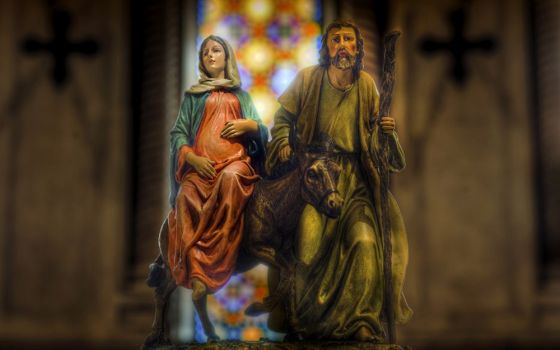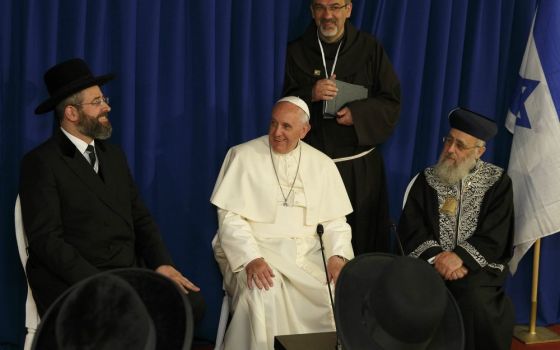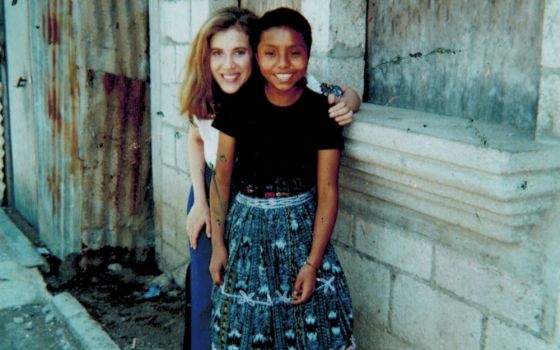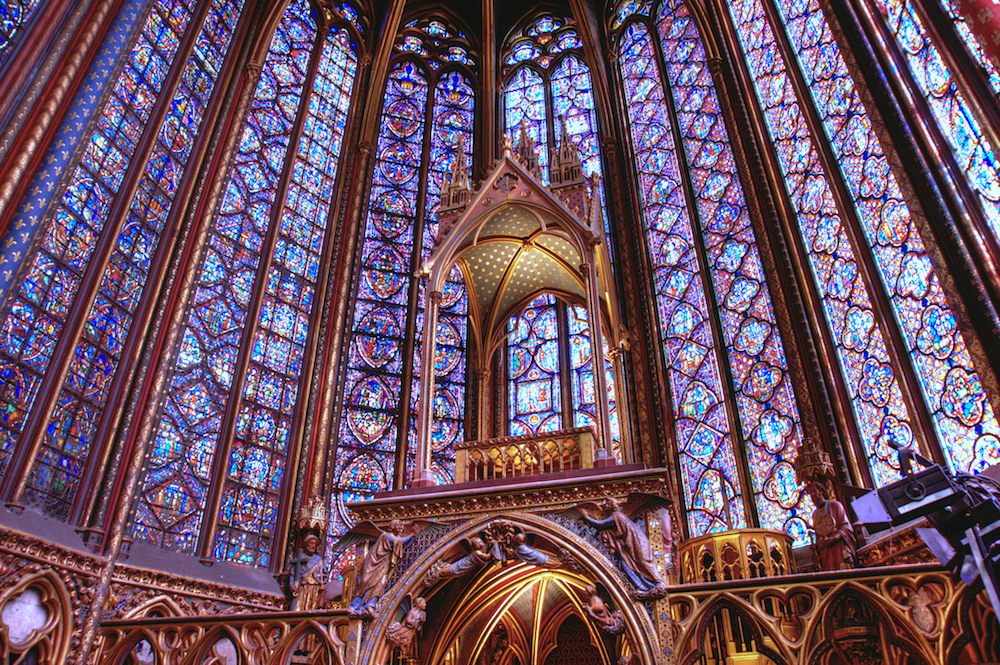
Altar view of Sainte-Chappelle Cathedral, built 1241-1248, Paris, France (Wikimedia Commons/Jean-Christophe Benoist)
Editor's note: This is the first in a series of essays by Jewish writers reflecting on their experiences with the Catholic community and answering the questions: What makes us approachable today, given our history and particularly this moment when we have revealed the worst of ourselves in the ongoing sex abuse scandal? Do you see something in us, in our art, in our tradition, in our work and ministries, that we might even overlook today given the tensions and embarrassing scandals within our community? For a more detailed explanation of the series see "NCR Connections: New series explores how Jews appreciate Catholic tradition."

The compassion with which Peter Falk imbued his character Columbo is one of the iconic homicide detective's best traits. When Columbo catches murderous evangelical singer Tommy Brown red-handed, for example, the latter (Johnny Cash) wonders aloud why Columbo isn't afraid to apprehend him alone. Columbo responds that the killer isn't pure evil. Turning one of Brown's songs on in the car, Columbo adds, "Any man that can sing like that can't be all bad."
That's a generous posture, albeit a fictive one from a television show, that I draw upon when I think what may be gleaned for the Catholic Church from its very rich cultural history during these exceedingly-trying times. This is a subject that's personal to me, but not in an expected way.
On a weeklong trip to Rome earlier this year, I attended nine Masses, including at St. Peter's Basilica. I visited so many churches that week that I only realized I'd repeated visits when I scrolled through my photos. I've walked in a late-night, silent Catholic pilgrimage in Amsterdam; knelt before the bench said to have held Jesus' body in the Aedicule at Jerusalem's Church of the Holy Sepulchre; attended midnight Mass at Madrid's Almudena cathedral; visited the Catholic church Regina Mundi in Johannesburg's Soweto township to see its "black Madonna"; and I go to Latin Mass occasionally near my home in Washington, D.C. I also often listen to Gregorian chants while I write or walk through museums.
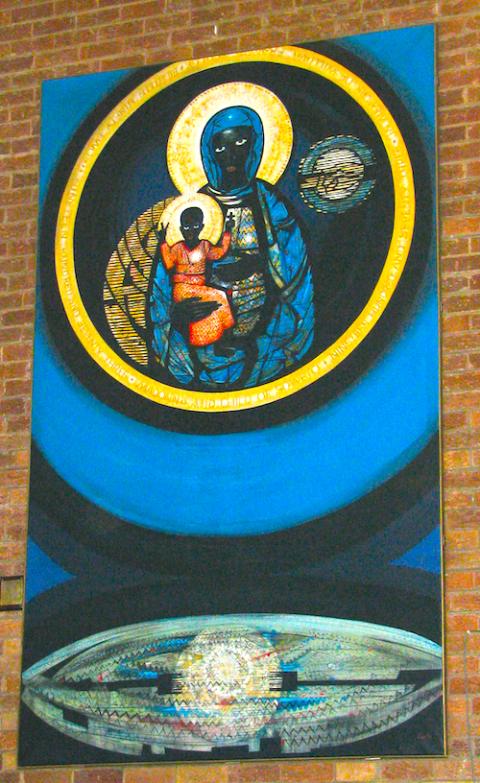
"The Madonna and Child of Soweto" at Regina Mundi Church in Johannesburg, South Africa (Menachem Wecker)
I say this not to brag about my devoutness, particularly because I'm not Christian. My given biblical Hebrew name, also that of a former Israeli prime minister, may betray my upbringing as an Orthodox Jew. The thought of setting foot in a church for any reason whatsoever simply didn't occur to me until my senior year of high school, when I had to decide on a two-week, senior-project trip to Paris whether I would buck what I'd been taught was taboo and visit Sainte-Chapelle and Notre-Dame.
Since then, I have seen thousands of the most important Catholic works of art and architecture, and I've been drawn to many of these artworks and artifacts knowing full well how problematic their context was for my co-religionists. Earlier this year, I greatly enjoyed an exhibit of portraits by Michel Sittow at the National Gallery of Art, despite knowing the 16th century Estonian artist was a court painter to Isabella I of Castile. Isabella and husband Ferdinand II of Aragon expelled Spanish Jews in 1492; her advisor and confessor since childhood was the inquisitor Tomás de Torquemada. It's hard to imagine keeping more bloodthirsty company than that.
There is more here, I think, than just one Jewish art critic's choice of beauty over the ugliness that often conceived it. Just as Columbo (fictitiously) respects the monsters he pursues and inevitably traps, I think art can expose the barbarous beliefs of the cultures and times which created it and simultaneously gesture to a greater good that transcends imperfect creators. Those who launched Crusades, supported the Inquisition, led holy wars, and slaughtered many Jews in medieval Europe also funded some of the most important art in the Western canon. And this is not to mention all of the later villains — including the Nazis — who also had art aficionados among their ranks. If the devil quotes scripture, there's no reason to dismiss his artistic prowess.
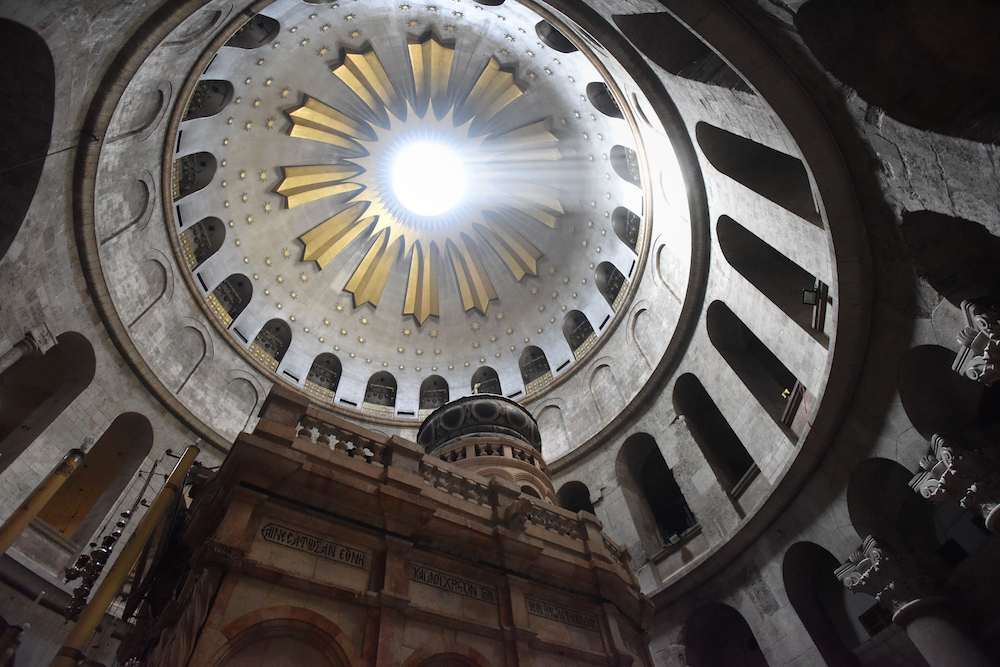
The Edicule, the traditional site of Jesus' burial and resurrection, at the Church of the Holy Sepulchre (CNS/Debbie Hill)
Contemporary religious leaders, who have betrayed their flocks' trust and ruined so many lives with their disgusting abuses, may have stopped sometimes to marvel at the soaring ceilings of their cathedrals, or at the way a window bathed a pietà just so in otherworldly light. Seeing that beauty, and the divine traces reflected therein, didn't prevent them from committing their crimes. Asking art to do what only God can do — to make people wholly new and to give them a new heart — is futile. But even art funded by abominable patrons can inspire others to do and to be good. At a time when many are reportedly rethinking whether they see a place for themselves in the church at all, my sense as an outsider peering in is that art can suggest a path forward.
One fear I have is that the transcendent material objects to which I refer could become jeopardized to pay for the many lawsuits against the church. That victims deserve justice is undeniable. Full stop. But it would also be tragic should those in the pews, and art lovers everywhere, lose access, or have different access, to immensely-important art to pay for the crimes of a demonic few. This also comes at a time that many, but not all, young people are less drawn to majestic, Gothic- or Renaissance-styled spaces, instead gravitating toward spaces, including sacred ones, which are more digitized and minimalist in design.
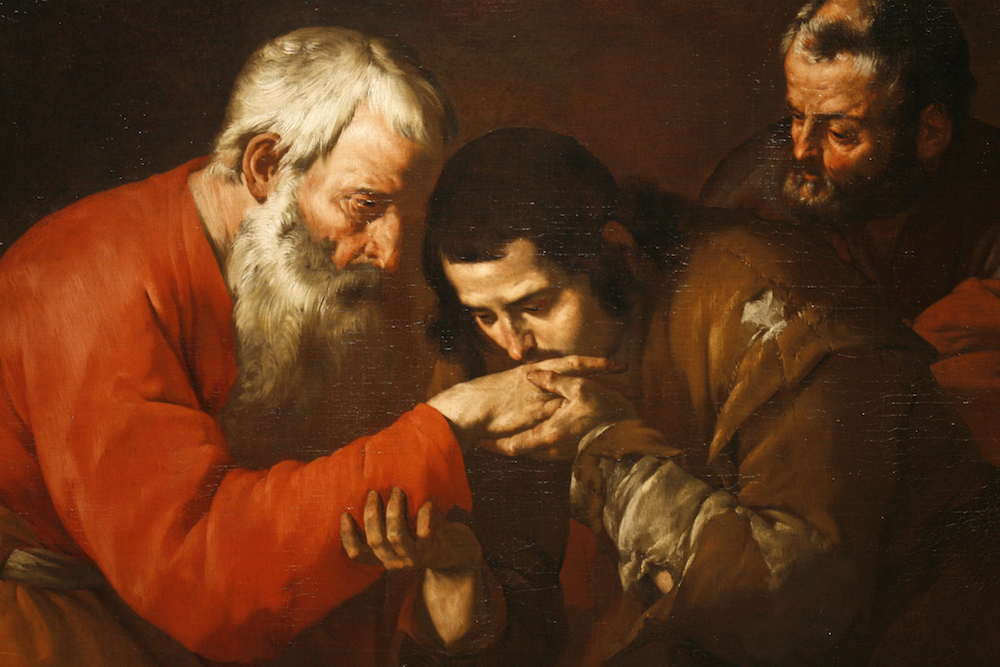
"The Return of the Prodigal Son,” painting by an unknown artist, circa 1630 Italy, at the Museum of Biblical Art in New York. (CNS/Bob Roller)
Sacred art can be studied and enjoyed in secular museums, which are often better equipped to care for the art than a church can. But there's something magical about an altarpiece or a religious painting installed in the sacred space for which it was designed. Seeing Michelangelo's crucifixion, which I'd studied in graduate school, in situ at Santo Spirito in Florence was a far more awesome experience than it would be to see it across the Arno at the Uffizi Gallery.
Installation in a museum can sanitize a work and sever it from its original context, where a sculpture of Jesus might intentionally point at a work across the church, or the proximity of one work to another might be designed to suggest a deeper point. In short, religious works in the most exceptional churches engage in sacred conversations with one another in a kind of visual symphony. Although they hold up just fine in their solos when relocated to museums, something has been lost when their wings are clipped.
Advertisement
Human life is far more important than art objects, and everything must be done to make sure that young and other vulnerable people are protected and criminals are punished. For victims, I can understand that looking at sacred Catholic art could be attached to very painful memories, or could simply not be a priority at all. I know many Jewish people who won't drive German cars and don't want to listen to Richard Wagner's music. But on the opposite side, it's very telling about the nature of evil that a society that could systematically murder Jews could also produce such great music and such superior cars. The boundary between good and evil feels even more precarious and terrifying if great art can be found on both sides of the border.
It's become somewhat of a cliché to say that Hitler was a failed watercolorist who couldn't get into art school. The truth is that his paintings were certainly much better than the overwhelming majority of the population is capable of producing. Having been a painter myself growing up, I suspect that it might have been possible that he lost himself and all that he believed in when he painted. There can be an overwhelming feeling of humility, of being small before the vastness of nature and of dissolving oneself while beholding one's subject matter, that takes over while one creates art. That doesn't mean anyone should scramble to purchase Hitler's art and hang it over the mantle, but I think it does mean that good art can happen to bad people.
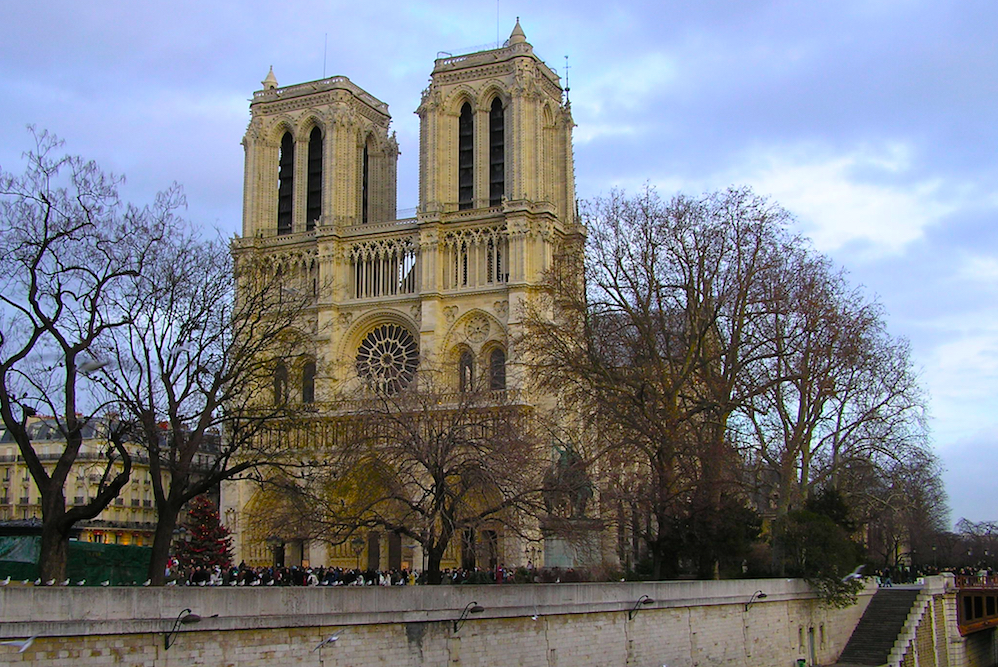
Notre-Dame Cathedral, built 1163-1250, Paris, France (Wikimedia Commons/Nicolas von Kospoth)
I'm penning this article at a time that Jews throughout the world are still reeling from the shooting at a synagogue in Pittsburgh, where worshipers were killed for simply being Jews. That's been a recurring trope throughout Jewish history, and I'm aware that Christians, often in the name of their faith, have killed far too many Jews to count. That includes Hitler, although of course his views on religion weren't straightforward by any means. The question that many people within the community in which I grew up often ask themselves is whether to parse certain Christians from their faith's real mission or whether there is something rotten at the core of Christianity that birthed the Crusades, Inquisition, countless pogroms and blood libels, and the Holocaust.
My sense in the course of my readings and study is that those people were misinterpreting or acting against their faith, rather than anti-Semitism being at the core of their faith. That's also what my impression about the many murderers who have masqueraded their intentions as indebted to their Islamic faith. Many religious criminals (of all faiths) likely believe they are doing what they've been divinely directed when they murder and commit a host of other heinous crimes. But I'm able to continue to stand in awe before great Catholic art — even anti-Semitic Catholic art — because I don't believe that the anti-Semitism is intrinsic.
There could be a philosophical argument here about that last assertion, but the truth is that when I sit in the pews and lose myself in a great medieval cathedral, I feel rather than think that this is a space where I feel comfortable. For someone who generally thinks first and feels afterwards, this was a revelation for me to realize. I don't know that I would say I feel in the presence of God, per se, but I am very aware that I'm on sacred ground, which inspires me to want to quietly introspect, confess (in a kind of way that lays bare who I am and who I want to be), and improve. I often joke that I'd like to convert to Catholicism for the art, and in a way, this is a kind-of aesthetic conversion moment for me each time.
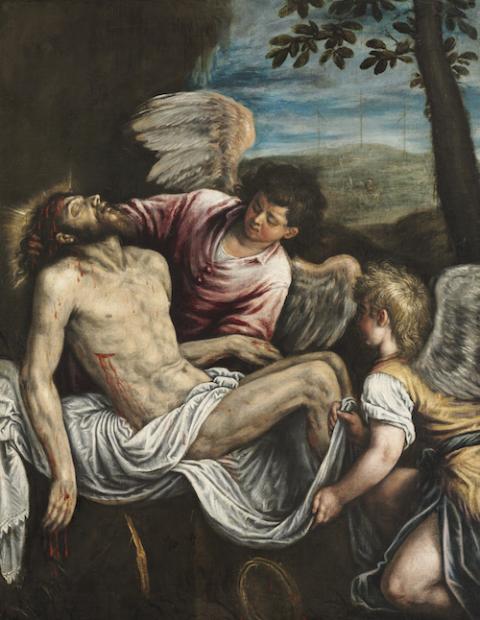
"The Dead Christ with Angels" by Leandro Bassano, circa 1580 (CNS/Courtesy in 2011 of New York's Museum of Biblical Art)
I first started reporting on the intersection of religion and art because I was firmly convinced that art presents a less-divisive visual vocabulary with which to initiate conversations even about very controversial and painful topics. Once religious art has opened a door, I figured, the discussion can go in any number of other important and interesting directions. More than 15 years later, I'm still convinced that's the case, and I think Catholic art can be useful entry point for many Jews to think in new and different ways about the church. It also, I think, can help many Catholics think in other ways about their own traditions and values.
When Catholics today are deciding what place, if any, they want and crave in the church, and what the church will look like going forward, I think the church's rich art history can help look beyond the individual offenders and take a wide-angle view of the faith more broadly. It's easy to take for granted how much Catholic artists have given the world. They helped us imagine what angels look like; they were at the center of the development of the codex book; they constructed some of the most important architecture; and they helped us associate otherworldly encounters with a beam of sunlight shining down, spotlight-like, on a saint or indeed any person. They not only dreamt up what heaven looks like, with all of its splendor and glory surrounding Christ enthroned, but they also conceived of a hell, with all its weeping and gnashing of teeth.
Good medieval Catholic paintings are so tight in their symbolism, where so many decisions about color and form animate so much meaning, that they are poetic. That barrier of entry may be too high for many people, but my experience has been that it's well worth the price. Along the way, many Catholic patrons — from popes to the Medici — had in mind propaganda that glorified themselves, and there's cause for great skepticism about the political power, the narcissism, and egotism that underpinned many of the religious treasures enshrined in museums and churches today.
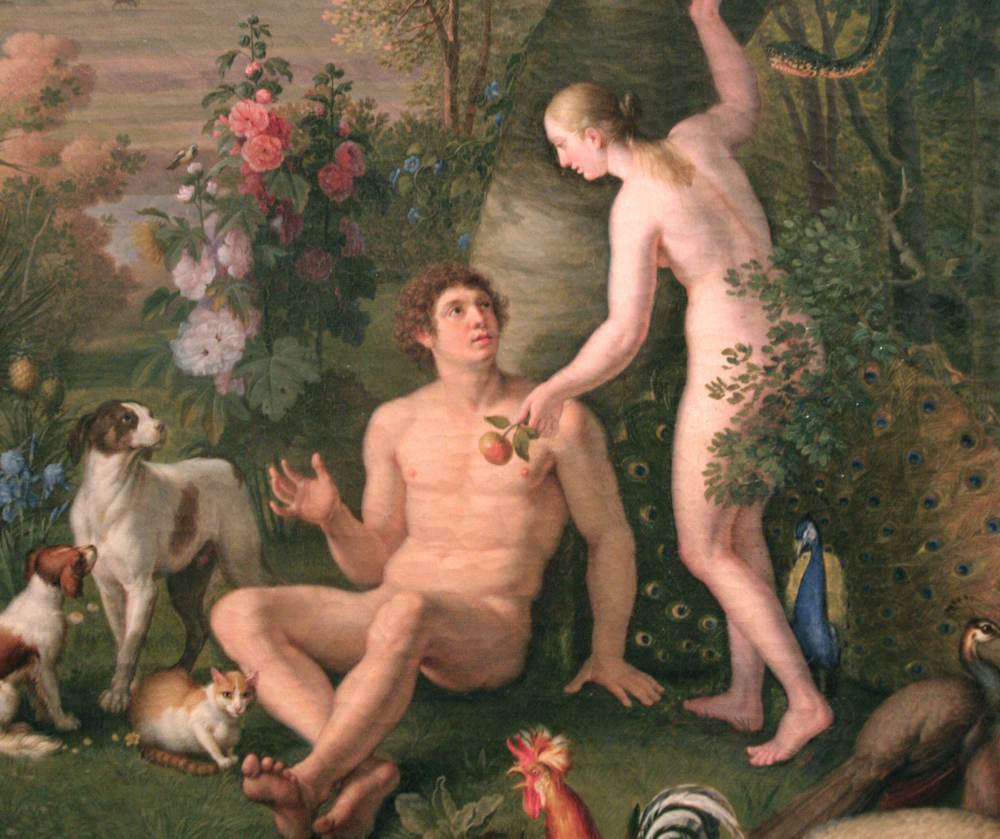
Detail of painting of Adam and Eve by Wenzel Peter, purchased by Pope Gregory XVI in 1831, displayed in the Pinacoteca at the Vatican Museums. (CNS/Nancy Wiechec)
But the patrons and the artists also glorified Christ. One of the most wonderful inventions of Catholic artists, to me, is the biblical scene that unfolds with donors kneeling in prayer. There might be a Madonna and Child enthroned in the central position, while smaller depictions of the donors worship around the edges. These were the 1 percent paying good money to have themselves depicted within arm's-reach of Jesus, which is undeniably arrogant. But the move is also sweet and humble. These people were commissioning paintings of themselves subservient to a higher power. They didn't always live up to that standard, as fallen people living in a fallen world, but that doesn't mean the standard, given such brilliant aesthetic form by artists who many times were monks, wasn't a good one for which to aim. And it still is.
[Menachem Wecker is a freelance reporter in Washington, D.C.]





